Return to home page
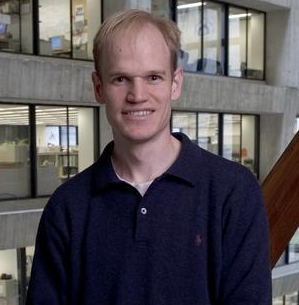

I had been thinking about this problem for two or three years and decided that I needed to either satisfy my curiosity or forget about it. I was able to squeeze two publications out of this work. The first article is on the optimal method to board passengers---based upon a simple, but (in my opinion) plausible, model. This article appeared in the Journal of Air Transport Management (the choice of journal was because I recognized the publisher, and it fortunately turned out to be a leading journal in the industry). The upshot is that the optimal method is one that parallelizes the boarding process rather than serializes it (like most carriers have done in the past). People standing in the aisle of the airplane are just standing in line. Loading back to front just moves the line inside the plane, but is not significantly faster than loading from the front to the back. This method has as many people as possible using the aisleway to store their luggage, allowing many more people to simultaneously prepare to sit.
In the summer of 2011 I was contacted by Jon Hotchkiss about actually conducting an airplane boarding experiment for his new show This vs. That where my method fared quite well. The resulting paper was also published in the Journal of Air Transport Management, making three papers total on this subject. This story was picked up by a few media outlets both in 2008 and in 2011. The media page has a more up-to-date-though-still-abbreviated list of media coverage on this topic.
An example passenger boarding order that is a member of the class of optimal methods.
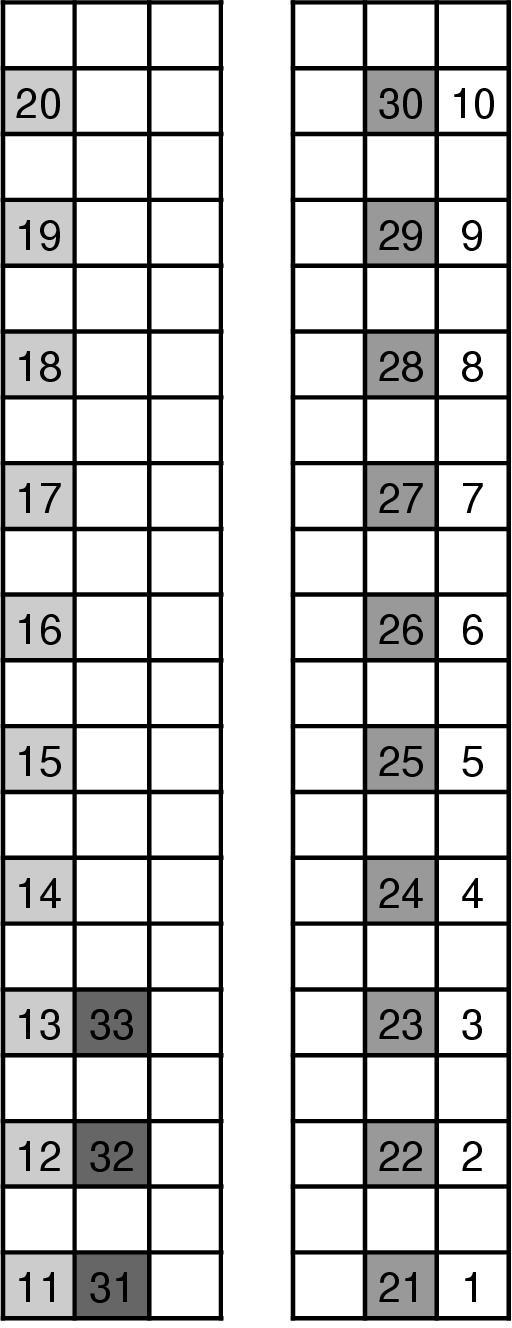
The second publication was a method to model free-for-all passenger boarding (like Southwest Air) which appeared in the American Journal of Physics. Here, I assigned a potential to each seat based upon the seat preferences of the passengers. Whenever a decision about where to sit needs to be made, a passenger (at some temperature that is a measure of their laidbackness) will make that decision using Boltzmann probabilities. Once they sit down, they don't move and the partition function is updated. I was pleased to see to see how well the decision making model, airplane boarding model, and the monte carlo reproduced the expected Fermi-Dirac distribution of seating. On the left is an example of the potential for each seat. The center shows the partially filled airplane as a function of increasing temperature. The right image shows the occupancy of the different seats for the same temperatures shown in the center (found with a monte carlo) also plotted are the predicted Fermi-Dirac distributions for these temperatures. Note that since the decision making and passenger boarding models ultimately result in a microcanonical ensemble of passenger states, the chemical potential is determined by the number of passengers and their energies and not by a chemical potential of a passenger exchanging reservoir (as in the grand canonical ensemble).
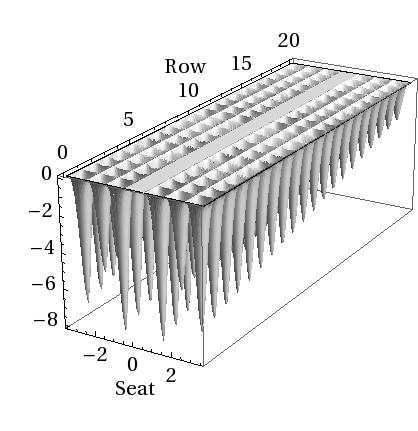
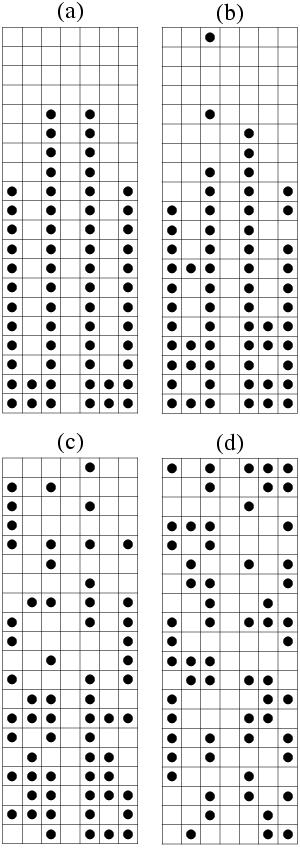
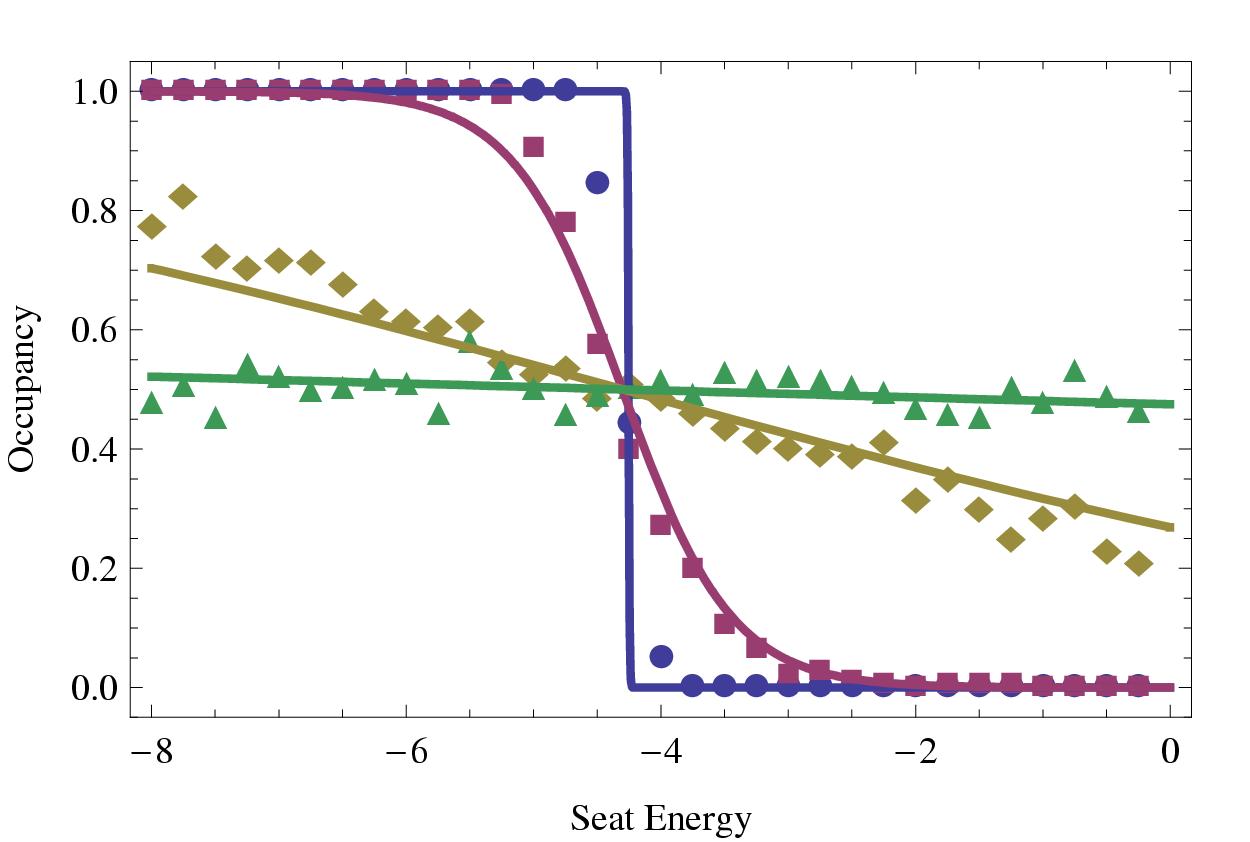
I was quite surprised about the media attention that this work received. Indeed, it was interesting to see the gestation period between posting the first paper on the arXiv and watching it appear on blogs and in other media outlets. It started on Cosmic Variance (thanks Julianne), and within a few hours appeared on a Cornell University economics class blog talking about Braess' Paradox (I think it was an econ class, I can't find the post any more). My first phone call from a reporter was at about day four. Interest peaked between days 10 and 14 with articles having appeared on physorg.com, wired.com, New Scientist, Nature news, Slashdot, a bunch of news websites (CNN, ABC, etc.) and both foreign (from Germany to Korea) and domestic newspapers (including my hometown Davis County Clipper). My first radio interview was with the BBC which spread to NPR (see below), a Canadian news agency, and some radio shows in Ireland and Australia---there were others, I should have kept better records but unfortunately didn't. Another interesting thing was how I became a nuclear physicist, an atomic physicist, and a rocket scientist as the reporting went to second and third-hand sources. I'm sure someone has done a study on how news stories evolve during their lifetimes, it was interesting to watch it happen in real-time.
Physorg.com article
Wired.com article
Nature News article
Radio interview on NPR's "All Things Considered".
Return to home page





